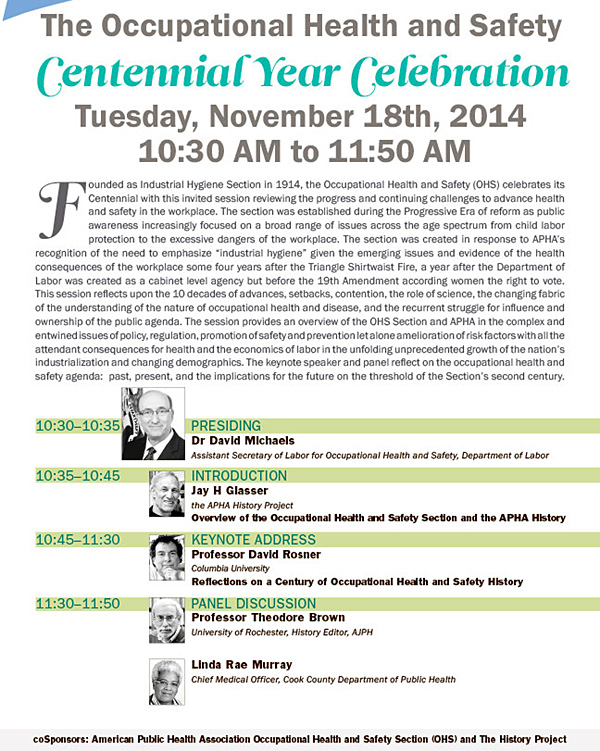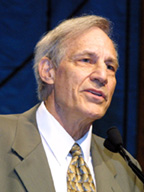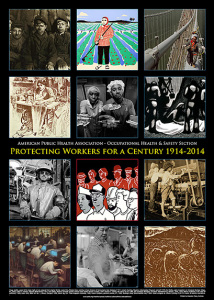元OSHA管理者がバイデン-ハリス移行のためのCOVID-19諮問委員会に参加
11月. 28, ジョー・バイデン次期大統領は、デビッド・マイケルズが, 博士, MPH, will join the team assisting the transition in preparing its response to contain... ...Continue reading →
Our Section is multidisciplinary.
• Our members include occupational health specialists, occupational physicians, union organizers, occupational and industrial hygienists, safety professionals, 看護師, 教育, 管理者, epidemiologists and attorneys.
We help determine APHA’s occupational health and safety policies and priorities.
• Through Section-developed resolutions and position papers, our members have a voice in directly and indirectly influencing national public health policy.
• Recent Section-initiated resolutions have addressed risks related to lead exposure, occupational transmission of HIV, surveillance of occupational disease and injury, child labor, ergonomics, job stress and workers’ compensation.
• We provide input concerning scientific and technical developments involving Section activities and expertise.
We plan and coordinate Section activities and events at the APHA Annual Meeting.
• Each year, the Section sponsors and co-sponsors about 40 sessions and forums at the Annual Meeting.
We have a long and storied history of fighting for the health and safety of workers.
• The Section recently celebrated its 100th anniversary! To see a timeline of our Section and its accomplishments click here: APHA OHS History Timeline
 In recognition of the 100th anniversary of the Occupational Health Section (OHS) of the 米国公衆衛生協会 (APHA), The OHS 100th Anniversary Committee humbly presented the OHS History Timeline. Below is a pdf with major dates and events in Occupational Health and Safety.
In recognition of the 100th anniversary of the Occupational Health Section (OHS) of the 米国公衆衛生協会 (APHA), The OHS 100th Anniversary Committee humbly presented the OHS History Timeline. Below is a pdf with major dates and events in Occupational Health and Safety.The Occupational Safety and Health Administration was established in 1971. それ以来, OSHA and our state partners, coupled with the efforts of employers, safety and health professionals, unions and advocates, have had a dramatic effect on workplace safety. Fatality and injury rates have dropped markedly. Although accurate statistics were not kept at the time, it is estimated that in 1970 周りに 14,000 workers were killed on the job. That number fell to approximately 4,340 で 2009. At the same time, 米. employment has almost doubled and now includes over 130 million workers at more than 7.2 million worksites. Since the passage of the OSH Act, the rate of reported serious workplace injuries and illnesses has declined from 11 per 100 workers in 1972 へ 3.6 per 100 workers in 2009. OSHA safety and health standards, including those for trenching, machine guarding, asbestos, benzene, lead, and bloodborne pathogens have prevented countless work-related injuries, illnesses and deaths. This timeline highlights key milestones in occupational safety and health history since the creation
of OSHA.
credit: https://www.osha.gov/osha40/timeline.html
The History Project will draw on media and text that can enrich and set the context for our membership groups . In effect, the site will become a kind of virtual museum in a box. The background and links invite the reader to explore further. An example relevant to set the background for the commitment and work of the Occupational and Health Section Is taken from the authoritative and and provocative permanent exhibit of the
ソース: https://museum.archives.gov/records-rights

 The Record of Rights Exhibit provides background on multiple aspects of rights and “the long arc” and struggle to make basic rights in the United States a reality.and take on issues and topics of importance to APHA and its members. The Topics list are displayed at left, and accessible on-line
The Record of Rights Exhibit provides background on multiple aspects of rights and “the long arc” and struggle to make basic rights in the United States a reality.and take on issues and topics of importance to APHA and its members. The Topics list are displayed at left, and accessible on-line

 by Jay Glasser, PhD MS FFPH
by Jay Glasser, PhD MS FFPHHappy Birthday to OHS at 100!! And you know, it really is a great privilege – you know – a birthday is like a memo to ourselves about where we’ve been and what we’ve been, and so it’s in the spirit of the APHA History Project that we wanted to engage peole and this is a great opportunity and I can only congratulate OHS for all its originality and as you were saying, Rebecca, energy translated into activity and purpose. So it’s fitting incidentally that we had adopted Rosie the Riveter as our icon. At the National Archives in Washington, the place where the Constitution and the Bill of Rights live, they say that Rosie is the most popular icon that they’ve ever had. And I though it was so fitting again, to what that symbolizes as far as rights and workplace and what it evokes and I think that’s part of the project… is how can we invoke history to what this section does, what APHA does and what is this amazing amalgam that’s always having heavy weather.
Watch the slideshow above to hear more of this talk.
 Reflections on a Century of Occupational Health & 安全性
Reflections on a Century of Occupational Health & 安全性I am absolutely honored to be talking with you today. As I said the other day, this is a very very very intimidating moment for a historian. I’m looking at the audience and I’m saying, “What am I doing here today telling you about your history?” I mean I look upon the group here and it is clearly living history. Also the present, I look around this audience and I see people I have such respect for, and I feel a little bit humbled and a little bit absurd telling you about it. I think you know some of the formal history that was outlined by David Michaels and after your staff meeting the other day you heard Dave Cuttleshuck give a very nice outline of the transformation of our section over the course of the past 100 年. He outlined very nicely the changing demographics of our section; who’s in it now; what they believed then and what has happened in between. To hear the rest of this talk, watch the slide show:

Commentary
Graham Rogers argues the importance of Industrial Hygiene
in AJPH in 1913
記事は継続し… ここに再現されません
以下の項目は、公衆衛生のアメリカジャーナルからです (AJPH) 1914 – ESTABLISHING THE SECTION